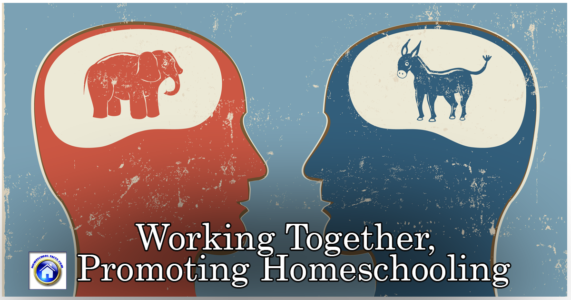Homeschooling has become a compelling conversational topic in the U.S. with those holding “pro” and “con” positions battling one another over the topic as though educating kids at home is a new idea. In fact, homeschooling was a common practice in the U.S. through the late 1800s, at which time individual states began passing the compulsory attendance laws we are familiar with in the 21st century. Original attendance laws required all U.S. children to attend public schools “or a private alternative,” which more-or-less formalized the idea that children should be educated outside the home. It’s important to be aware that parent-directed, nongovernmental schooling was the default for most of U.S. history until Massachusetts set the first compulsory attendance law in 1852.
In fact, homeschooling got a huge academic “boost” from the counter culture movement in the 1960s when a group of “hippie” educational reformers began to openly question the idea of public school and campaign for the right of parents to make educational decisions for their own children. Homeschooling, as we now recognize it, was actually pushed even further to the forefront during the early 1970s and well into the mid-1990s by these same “liberals,” working side-by-side with religious homeschoolers and homeschoolers working to properly educate their special needs children. In other words – what we now value as the homeschooling movement was basically created by a diverse group of liberals and conservatives working together.
One of the greatest qualities of the current movement to return education back to the home base is the fact that every political, moral, religious and intellectual “type” has, at one time or another, supported some portion of the idea of school choice. In many ways, there are no “outliers” in the conversation and no concept of the irony of “liberals” returning to the homeschooling debate. Everyone has contributed to the movement in one way or another. Yes, there have always been ideological disagreements about public education vs. school choice, but the notion that liberals are somehow “returning” to a dialogue they actually originated or that conservatives own the homeschooling concept does not hold water. Liberals and conservative religious groups worked together to bring homeschooling back to the ideological forefront and are basically the same people who are now supporting the idea of school choice.
The United States appointed its first Secretary of Education in 1979. Thirty-eight years and ten Secretaries of Education later, the homeschooling and school choice conversation is still valid and gaining supporters from all walks of life and all belief systems. From 2003 through 2012, the number of U.S. students ages 5-17 who were being homeschooled increased by 61.8% and that percentage is still increasing on an annual basis. To sustain this momentum, it’s important that we remember that the discussion about protecting our children’s right to an education of their choice can only result in success if we approach the issue free from finger pointing, political affiliations, bias, or designation of liberal or conservative leanings. We owe it to our children and their futures.

